Minds On
Changing areas
Over many years humans have moved into places where only animals used to call home.
What were once natural spaces have become cities, towns, farms, and places where more and more humans live.
Using cameras in space, we are able to explore how an area has changed over thirty years.
Explore the following images of Calgary, Alberta.
Notice how the city of Calgary has changed from 1995 to 2021.
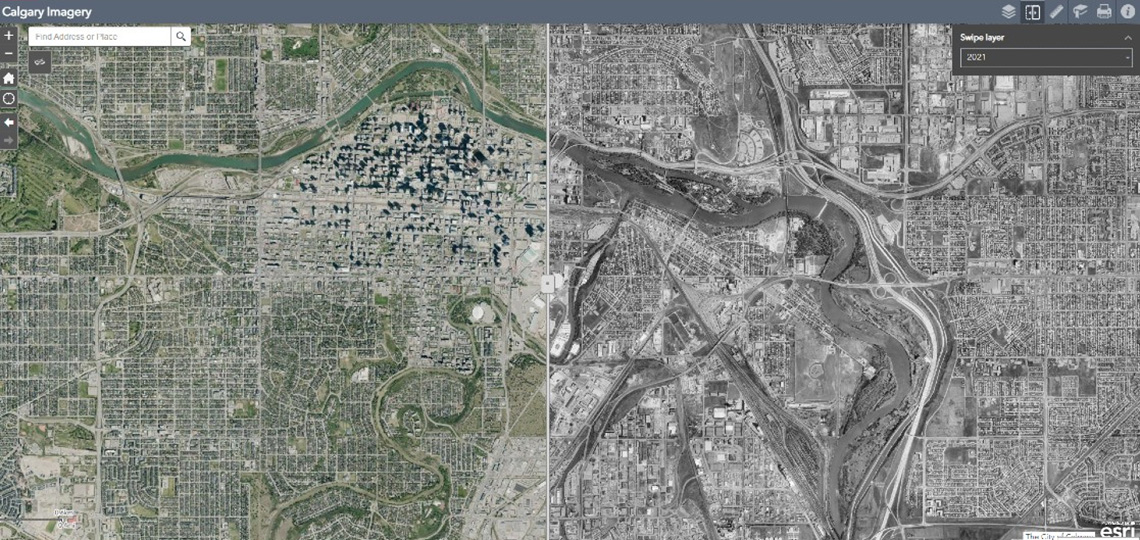
Calgary in 1995. There are lots of buildings and some open spaces on the edge of the city.
Calgary in 2021. There are buildings in almost the entire area. There is not much open space.
- What do you think these changes have meant for the animals who lived there?
- What kinds of animals might stay? Which ones might leave?
- What do you notice about the way the city grew?
Record your answers on paper, in a recording or using another method of your choice.
Action
Animals in the city
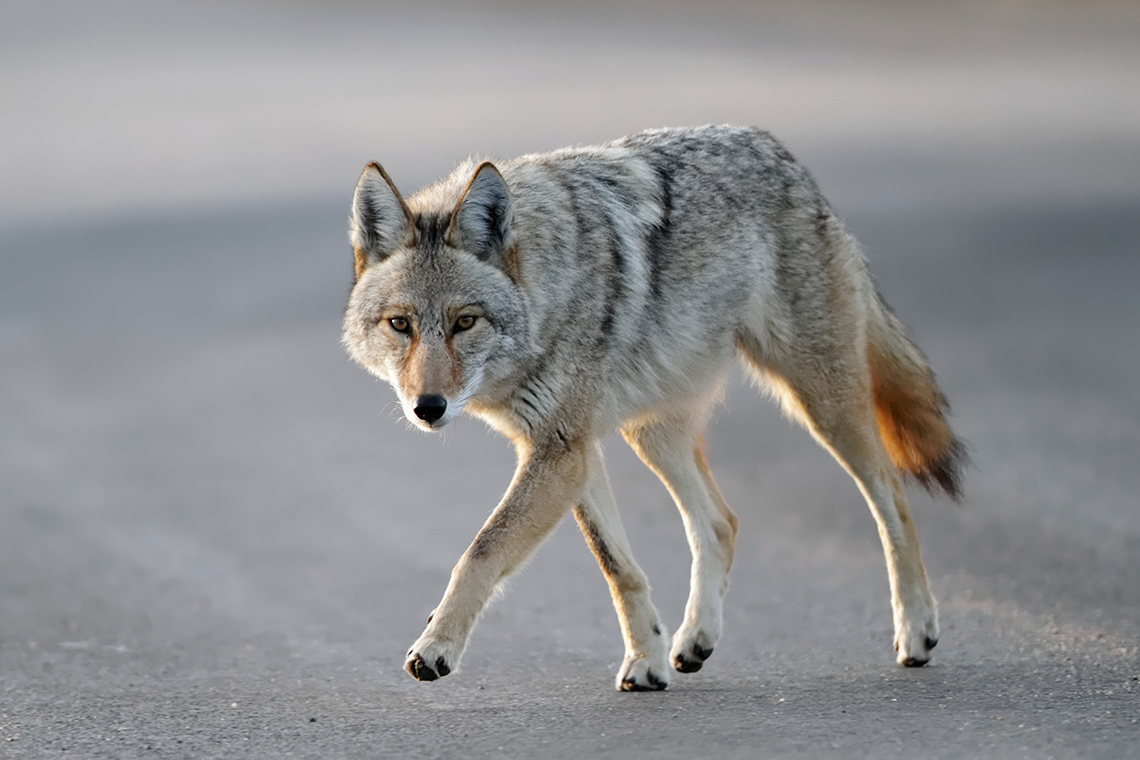
When cities and towns across Ontario grow and spread into what were natural areas, people are finding more and more animals coming to visit.
Animals and people impacting each other
In the Minds On, you explored the changes in a neighbourhood over time. You thought about how these changes would impact the animals who lived in that natural space.
When a new neighbourhood is built, the animals who have lived in that environment are impacted. Some of these ways include the following:
- their homes in trees, grasses, or plants may disappear
- their plant food may be less available for them
- the animals that they lived with or ate as food may be less available for them
This means that many of those animals may have to leave to find a new home or they may not survive if they can’t move away.
Use this information to answer the following questions:
When a new neighbourhood is built, do homes of animals disappear?
Press ‘Answer’ to access the answer.
Yes, when a new neighbourhood is built some homes of animals disappear.
When a new neighbourhood is built, does animal food disappear?
Press ‘Answer’ to find out.
Yes, when a new neighbourhood is built, animal food can change and disappear.
When a new neighbourhood is built, can many animals live as they lived before?
Press ‘Answer’ to explore the answer.
No, when a new neighbourhood is built, many animals cannot live as they lived before.
Do you think there is anything that people who create new neighbourhoods could do to try to protect the animals that live in that area?
Record your idea in a method of your choice.
One animal that can exist in the country, or in cities or towns or new neighbourhoods are coyotes.
Characteristics of a coyote
Although wolves and coyotes are similar in many ways, they have some important differences.
Wolves commonly live in a forest in the north. It is unusual to find a wolf in a city or town.
Coyotes are common to find in the forest, or on a farm. More and more, people are finding coyotes live among them in cities and towns.
Creature features
Explore the following videos. One video shows a wolf, and the other video shows a coyote.
Can you notice the differences between a coyote and a wolf?
Wolf
Coyote
Test Your Skills!
Animal investigation
What are some of the differences between the wolf and the coyote?
When you’re ready, press the ‘Answer’ button to reveal some differences.
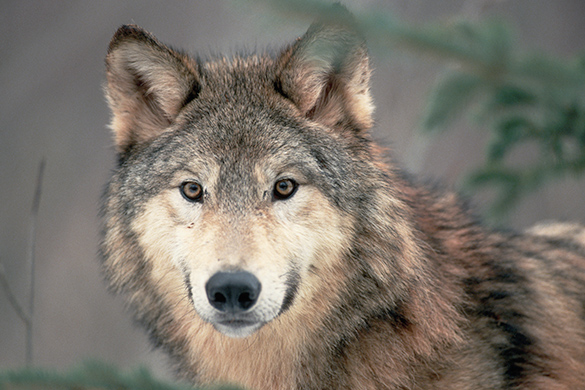
Wolf
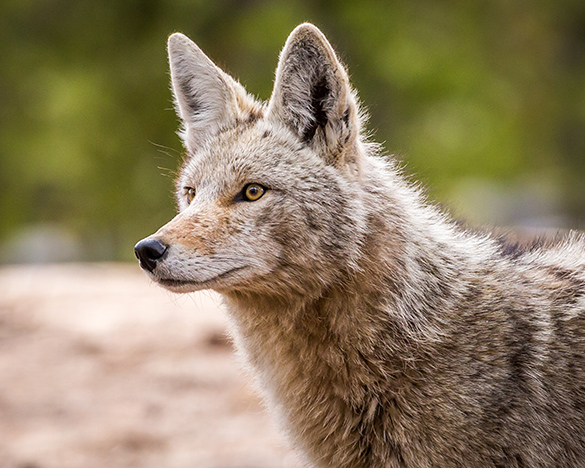
Coyote
The colouring of a wolf is more grey, and the colouring of a coyote is more tan. The face of a wolf is more square and the face of a coyote is more pointy.
Tracks and size
Compare the tracks and size of the coyote and wolf.
Explore the following images of coyote tracks and wolf tracks.

Coyote track

Wolf track
Next, explore the following images of a coyote and a wolf.

Coyote

Wolf
Show what you know!
Using what we’ve learned, sort the following characteristics of wolves and coyotes.
If the characteristic is for a wolf, drag it to the “Wolf” category. If the characteristic is for a coyote, drag it to the “Coyote” category.
Pause and Reflect
Which one might you see?
Do you think that you are more likely to find a wolf or a coyote in your neighbourhood? Why?
Record your answer in a method of your choice.
The impacts between people and coyotes
Even though it is not uncommon to find coyotes living in the same areas where people live, they can impact people in these areas.
When coyotes are hungry, they will search for food. They may eat pet food that people left outside or garbage from the street. If they get used to eating this food, they may start to eat this food often and come close to people, which can be scary for the people and the coyotes.
If the coyotes eat food from the garbage which has been disposed of incorrectly, the garbage ends up out of its bag and into the street. This garbage may end up in the water or environment and pollute the environment. This means garbage that people did not dispose of correctly can negatively impact the coyote and the environment.
Explore the following questions. Select the correct answer, then press ‘Check Answer’ to check how you did.
Is there anything that people can do so that coyotes don’t eat their garbage?
Record your idea in a method of your choice.
Adaptable animals
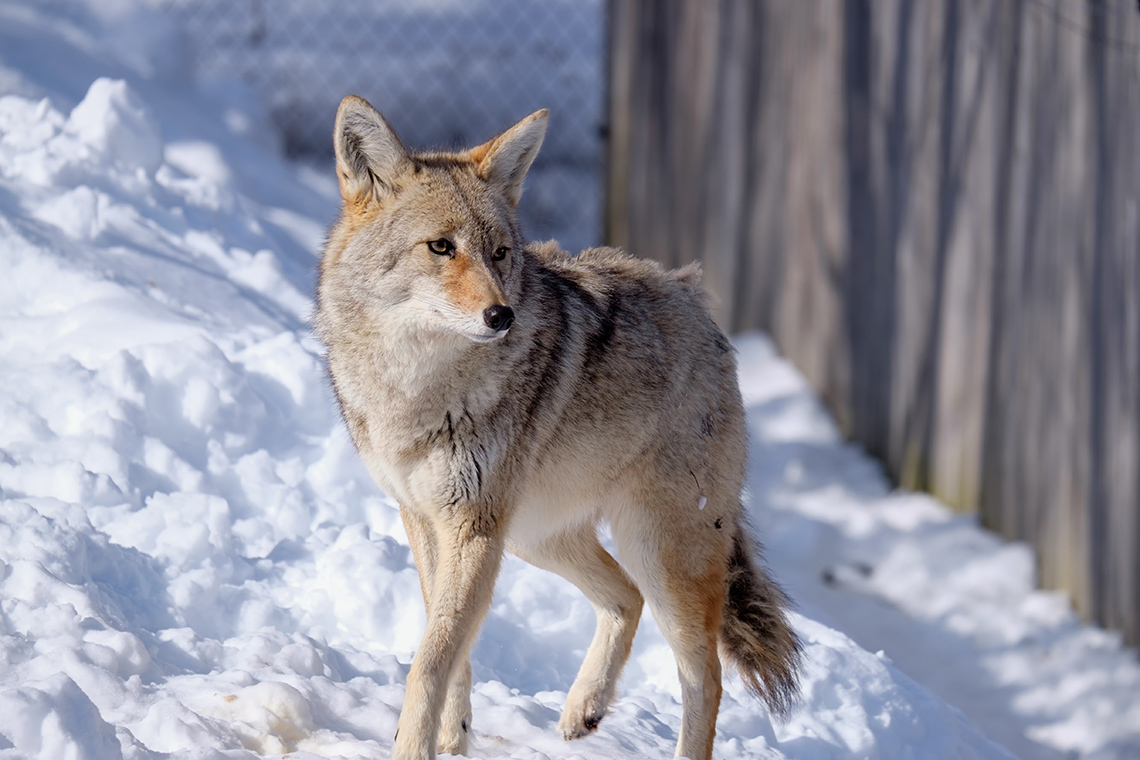
A coyote is adaptable in many ways. Being able to live in different places is one way that the coyote adapts. This means that a coyote can survive in many different areas, eat different types of foods and feel safe in its environment in any season.
Do you know of any places a coyote might live?
Explore the following video entitled “Adapto the Coyote.” In this video, the Wild Kratts list some places that a coyote might live.
Now, explore this second part of the video to learn even more about coyotes!
After exploring these videos about coyotes, use the following checklists to show what you know!
Where do coyotes live?
When you’re ready, press the ‘Answer’ button to reveal the places where coyotes live.
The Wild Kratts mentioned these habitats in the videos:
- northern woods
- cities
- deserts
How do coyotes communicate?
When you’re ready, press the ‘Answer’ button to reveal how coyotes communicate.
The Wild Kratts said that coyotes communicate by barking, yipping, and howling.
We’ve learned a lot of information about coyotes today!
When I learn new information, I…
Why might a coyote need to communicate to another coyote?
What are three things that coyotes do to show how adaptable they are?
Record your thoughts in a method of your choice.
The more we can understand the movement and behaviours of urban wildlife, the more we can work to protect habitat for them and live in harmony with wildlife.
Monitoring behaviour
One way that we can better understand human-wildlife interactions is by using trail cameras in areas where both coyotes and humans live, work and play.
This trail cam is in Bronte Creek Provincial Park and it captured a coyote exploring the campground in winter.
Queen’s Printer for Ontario, 2020. Reproduced with permission.
Pause and Reflect
Helping coyotes, helping humans
How could tracking this coyote help people?
How could tracking this coyote help coyotes?
Record your thoughts in a method of your choice.
Consolidation
Whose habitat is that?
This learning activity connects new and existing approaches for young scientists to create positive changes in their communities.

When humans move into a coyote’s area by building a new neighbourhood, the coyote might try some different behaviours to meet its basic needs. These behaviours might be considered helpful or harmful to the humans moving in.

Sort the following coyote behaviours into whether they are helpful or harmful to humans.
Brainstorm
Relocating wildlife
Sometimes when humans have moved into what was a coyote’s habitat, the coyote may be caught and moved back to an area away from where people live and work.
In a format of your choice, explain one reason why humans might feel this is needed, and one reason why it isn’t fair to the coyote.
We’ve learned a lot of information about coyotes today!
Use the following checklist for some tips about learning and sharing new information.
When I learn and share new information, I…
What information that you have learned would you like to share? Why?
Record this information you would like to share in a method of your choice.
Reflection
How do you feel about what you have learned in this activity? Which of the next four sentences best matches how you are feeling about your learning? Press the button that is beside this sentence.
I feel…
Now, record your ideas about your feelings using a voice recorder, speech-to-text, or writing tool.